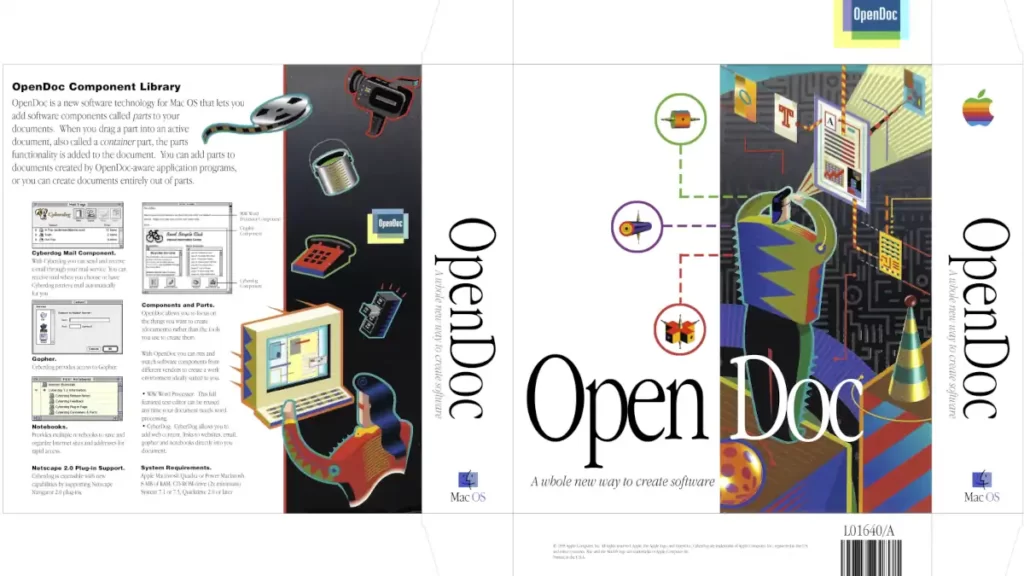OpenDoc was a cross-platform software framework for compound documents, developed by Apple Computer. It was designed as an alternative to Microsoft’s Object Linking and Embedding (OLE) technology, which was proprietary and only available on the Windows platform.

OpenDoc was intended to be a standard for creating and editing compound documents that could be used on a variety of platforms and operating systems. It allowed users to link and embed objects from one application in a document created by another application, similar to how OLE works. For example, users could embed a spreadsheet from a spreadsheet application into a word processor document and edit it directly within the document.
OpenDoc was supported by a number of software vendors and was included in several versions of the Macintosh operating system. However, it never gained widespread adoption and was eventually discontinued by Apple in 1997.
How did OpenDoc work?
OpenDoc provided a set of APIs (Application Programming Interfaces) and tools that developers could use to build compound document applications. It allowed applications to work together to create and edit documents containing text, graphics, and other media types.
OpenDoc used a modular architecture that allowed developers to create “parts” – small, reusable components that could be plugged into a document. Each part was responsible for a specific task, such as displaying text, displaying a spreadsheet, or playing a sound. Parts could be created by different developers and from different applications and could be used together in a single document.
To create a compound document with OpenDoc, users could open a blank document in a host application (such as a word processor) and then insert parts from other applications into the document. For example, a user could insert a spreadsheet part from a spreadsheet application into a word processor document. The part would be displayed as an object within the document and could be edited directly within the document.
OpenDoc also provided a set of tools that developers could use to build compound document applications. These tools included a parts library, a parts editor, and a parts manager. The parts library allowed developers to browse and select parts to use in a document. The parts editor allowed developers to create and edit parts. And the parts manager allowed developers to manage and customize the set of parts that were available to users.
Examples
Some examples of applications that used the OpenDoc framework include:
- AppleWorks: A productivity suite with a word processor, spreadsheet, and drawing program.
- FrameMaker: A professional-grade document preparation and publishing application.
- Nisus Writer: A word processor that was popular among Macintosh users.
- HyperCard: A software application that allowed users to create interactive documents and multimedia presentations.
These are just a few examples of applications that used the OpenDoc framework. There were many other applications that supported OpenDoc, ranging from simple text editors to complex database applications.